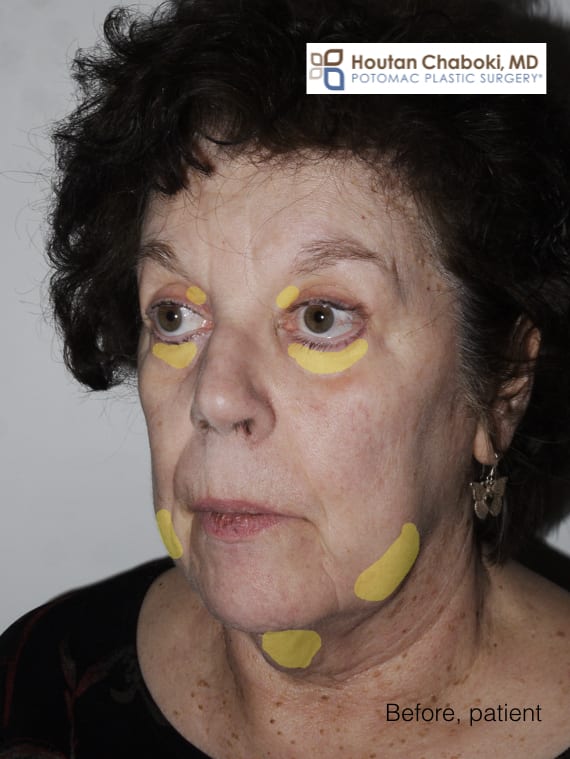Fat is a major component when considering cosmetic surgery. Certain areas of the body require less fat (ex. neck), while other areas need more to enhance one’s appearance. Facial fat does not only fluctuate with body weight, but also from many other factors.
Areas of Facial Fat Loss
Volume loss occurs variably in all patients from the natural aging process, sun damage, or other reasons. Certain areas of the face have fat, muscle, and bone shrink more as compared to other areas. Hollowed areas of the face develop shadows that may be bothersome to patients. Patients may have concerns such as dark circles, flat cheeks, “skeleton” or thin appearance, or deep wrinkles. Below are example areas that are typically prone to volume loss and hollowing:
- cheeks
- lips
- smile lines
- lower eyelid area
- temple
- brow
Areas of Facial Fat Gain
Fat gain occurs in fewer places as compared to fat loss. It also will vary based on multiple factors. Plastic surgery is more likely be required to reduce excess fat. Liposuction can sculpt the neck and jowls. Another surgical example is lower blepharoplasty for eye bags. Injections may be appropriate for specific fat (ex. Kybella® for double chin). Below are example areas that are typically prone to volume increase from fat:
- upper eyes
- lower eyes
- jowls
- neck
What is Fat Transfer?
Fat transfer takes living fat from one area of the body and immediately transfer to another area to restore fat loss. Plastic surgeons often will take fat from the hips and abdomen with gentle liposuction, then inject into the desired areas.
Fat transfer may also be referred to as facial fat injection. The entire fat transfer procedure itself usually takes less than hour for facial rejuvenation. Fat transfer may be performed in isolation or combined with other procedures such as a facelift or eyelid surgery.
What is a Facelift?
A facelift may me required to reduce or reposition excess facial and neck fat. Excluding the marketing names and brands, there are several technical types of surgical facelifts to choose from: lower facelift, neck lift, deep plane facelift, SMAS lift, s lift, and mini lift. Plastic surgeons take into account several factors such as skin and laxity, degree of facial aging, specific areas of concern, fat volume and position, bone structure, and recovery time. Read more about being a candidate for a facelift.
Plastic surgeons will evaluate a patient and determine what regions need addition or subtraction of fat volume as part of sculpting the face and neck. Treatment areas and methods are mutually determined by both the patient and plastic surgeon.
Have you considered a rejuvenation procedure with cosmetic surgery? Feel that you’re looking tired or worn out? Consider a procedure that modifies fat to enhance your appearance.
Contact the office to schedule a consultation.


Leave a Reply